 |
| Photo Credit: Mine! |
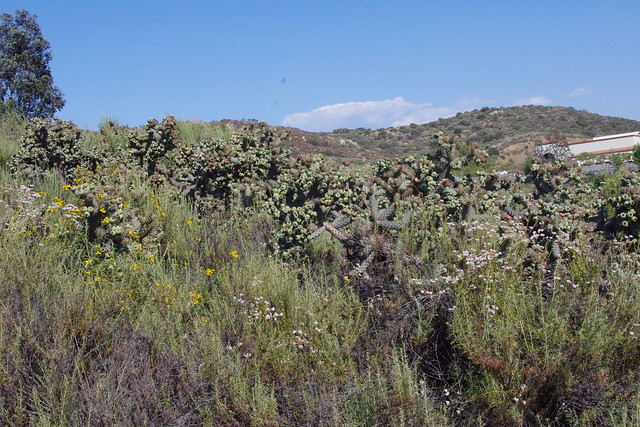 |
| Photo Credit Mine! |
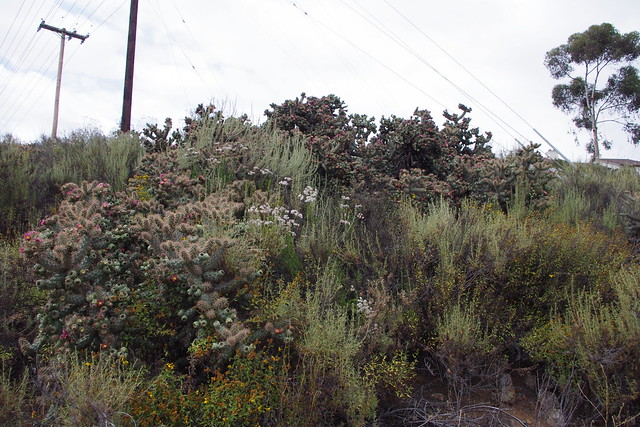 |
| Photo Credit: Mine! |
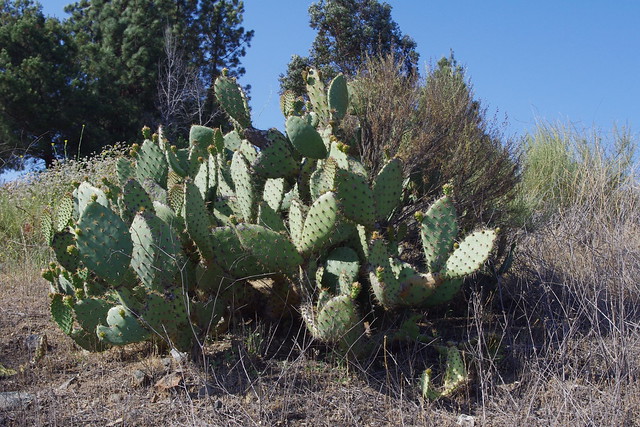 |
| Photo Credit: Mine! |
Of course Coastal Cholla is not the only Cacti out here in the back country. Prickly Pear Cactus is also present, though not as abundant as the Coast Cholla. I have often found nests in these plants as well. Okay, the next couple shots will be of the red flowering blooms which are still present and the greenish fruits (Apples or Tunas) for which I have never seen or heard of any animal, bird or human ever eating. Of course that doesn't mean they don't, but I've never even found wild evidence. Bet if I started a rumor that the taste and effects are like those of Peyote Buttons that might soon change. Let's see who bites!
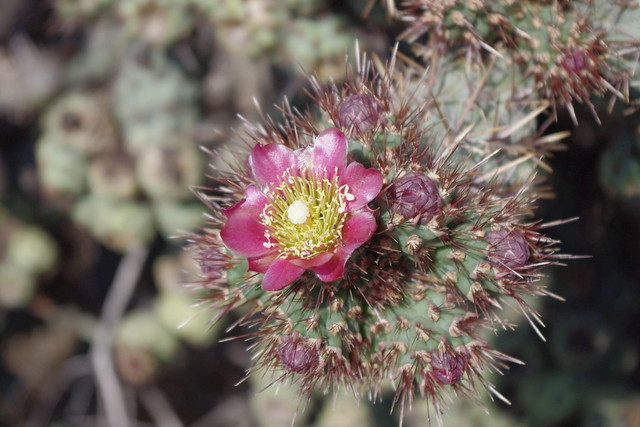
I have to admit that getting close and taking these shots was a bit tricky, not only from above, but also watching for Cactus arm joints and fallen fruits all over the ground below. Plus it was also a lousy idea to be strolling around these areas in short pants. Because of this, Star Thistle was also an issue on my legs. I was smart this time out. Before hiking, I put on long pant Jeans. Star Thistle has butchered up my legs too many times before. Dried dead vegetative skeletons of the Mediterranean Mustard are bad enough.
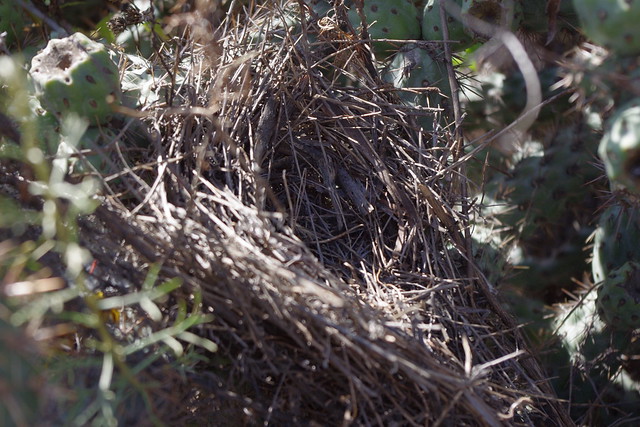 |
| photo: Mine |
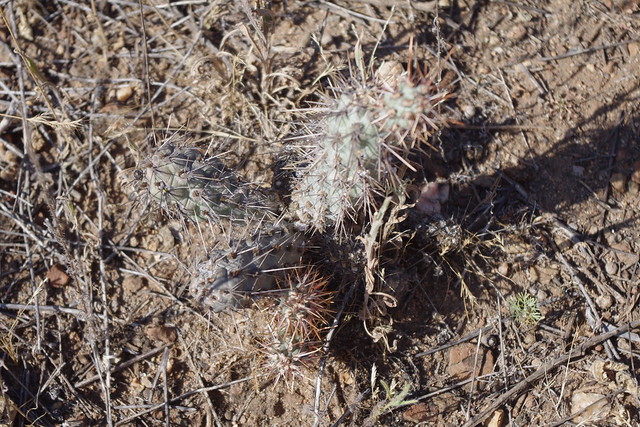 |
| Photo Credits: Mine! |
Getting back to things which are hidden and can surprise you while walking, these little young Cholla plants are everywhere, hence the need to be keenly aware of your surroundings and be watch. |
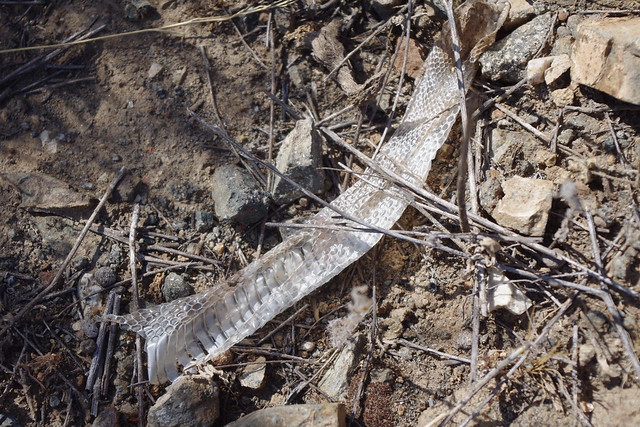 |
| Photo Credit: Mine! |
Speaking of being watchful for things with sharp pointy thingys, you'll never know about what maybe lurking under cover of chaparral or cacti.
 |
| Photo Credits: Mine! |
These Black Harvester ants are also interesting and a necessary wild component to coastal chaparral Sage Scrub habitats. They are also another reason to be vigilant when out hiking. Stop in the wrong location next to their nest to observe some other kool eye catching object of your attention and they'll crawl up your pants leg and sting. Another fascinating thing about these ants that I have not really seen with the Red Harvester or any other ant is their bull dozing ability to cut pathways with their powerful jaws. Even if you stumble upon a trail like this that is not presently being used, you at least know they are nearby.
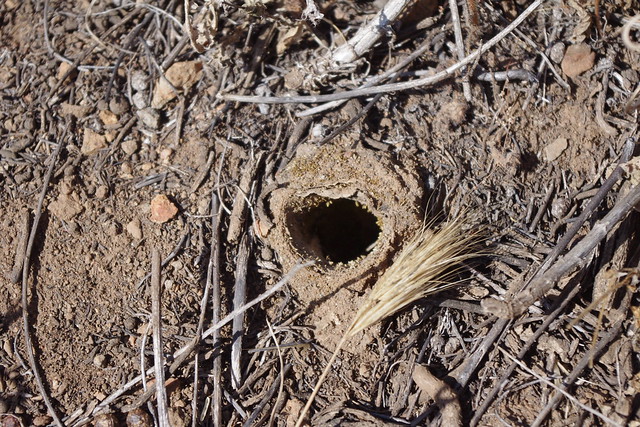 |
| Photo Credit Mine! |
And now finally perhaps many here know what this hole in the ground is. Here's a hint, it doesn't have it's door and it was probably abandoned by the former occupant. That's easy enough to deduct as they would have built another door. Well, even with the door, many will recognize a Trap Door Spider burrow. Man I've really been missing a lot. Again, when out and about in chaparral plant communities, there are multiple reasons to keep your eyes peeled.
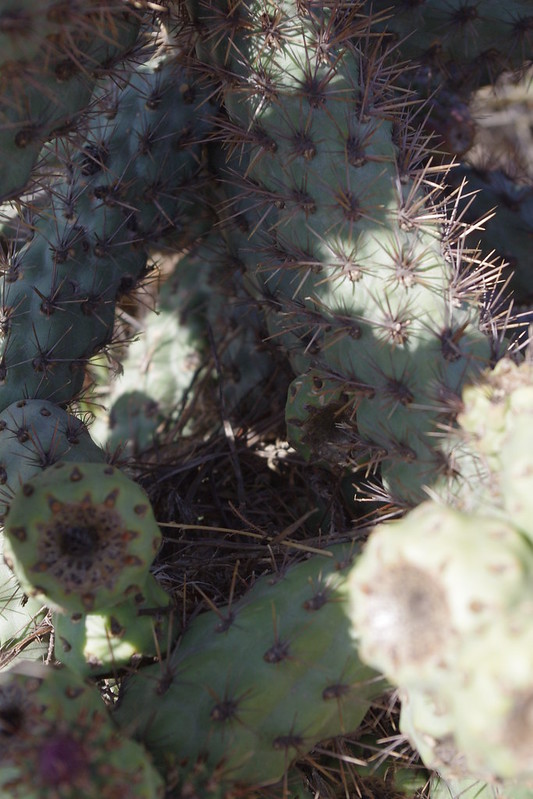


No comments:
Post a Comment
Thanks for visiting and for your comments!
I will try to respond to each comment within a few days, though sometimes I take longer if I'm too busy which appears to be increasing.